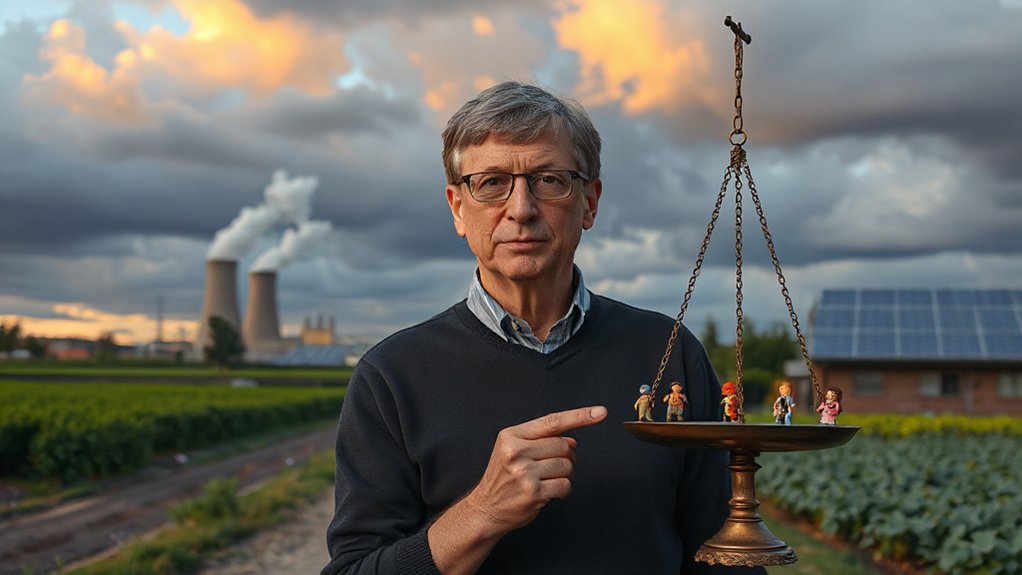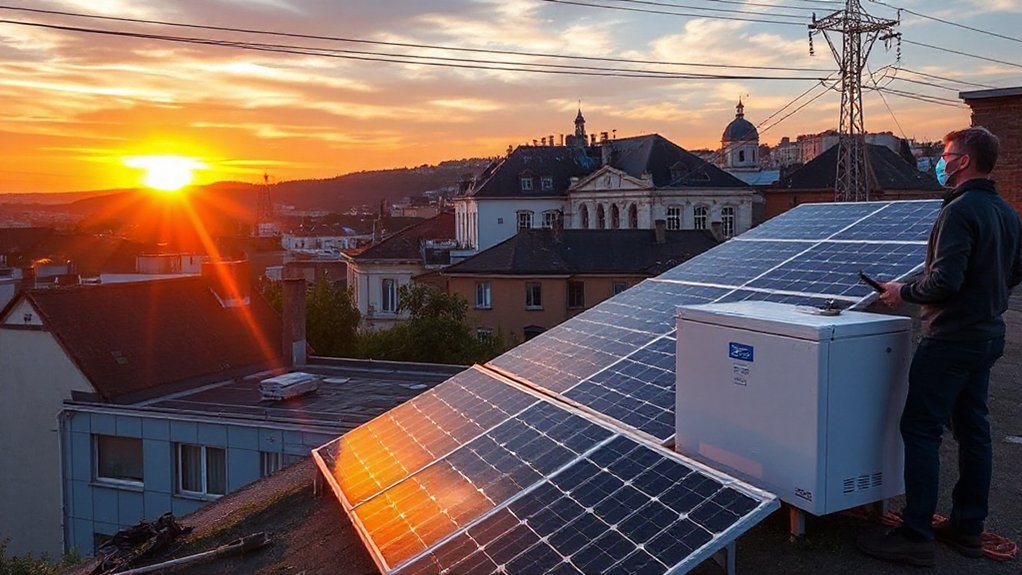Bill Gates has pivoted. The billionaire philanthropist known for his laser focus on cutting greenhouse gases is now taking a broader view. Human welfare and development are sharing the spotlight with emissions reduction. It’s about time, some would say.
The shift represents a more holistic approach to tackling climate change. Gates isn’t abandoning emissions goals—far from it. He’s simply acknowledging that people matter too. Revolutionary concept, right? This strategy could reshape global climate initiatives by considering both planet and population in the same breath.
Economic factors play heavily in this U-turn. Cost-benefit analyses suggest that a welfare-focused approach might actually deliver better results than strict emissions targets alone. Gates is betting on smart investments in technologies that do double duty: improving lives while cutting carbon. It’s not rocket science, but it might work.
Technological innovation remains central to Gates’s vision. Renewable energy, efficiency improvements, carbon capture—these aren’t just climate solutions. They’re potential prosperity engines. Sustainable infrastructure isn’t merely green; it creates jobs. Who knew?
Innovation isn’t just about saving the planet—it’s about creating prosperity. Green technology builds more than carbon solutions; it builds futures.
The social impact could be substantial. Food security, water management, and public health are now part of the conversation. Climate policies that ignore these factors risk becoming irrelevant to billions struggling with immediate needs. Gates seems to have finally noticed.
This approach aligns with international agreements while challenging their narrow focus. The Paris Agreement gets a nod, but Gates is pushing for frameworks that better integrate human development. Global cooperation mechanisms need updating. They’re showing their age.
Funding for this dual-purpose strategy comes from multiple sources: philanthropic efforts (hello, Gates Foundation), government investments, and private sector capital. The money’s flowing in new directions now.
Gates’s climate U-turn isn’t abandoning environmental goals. It’s just acknowledging an inconvenient truth: emissions reduction means nothing if people can’t survive long enough to see it happen. Sometimes, you have to walk and chew gum at the same time.
The disparity between support for fossil fuels and renewables remains stark, with fossil fuel subsidies reaching $7 trillion in 2022, nearly 42 times more than renewable energy subsidies.






